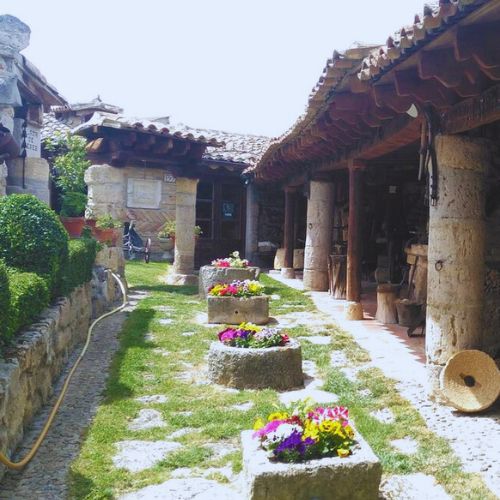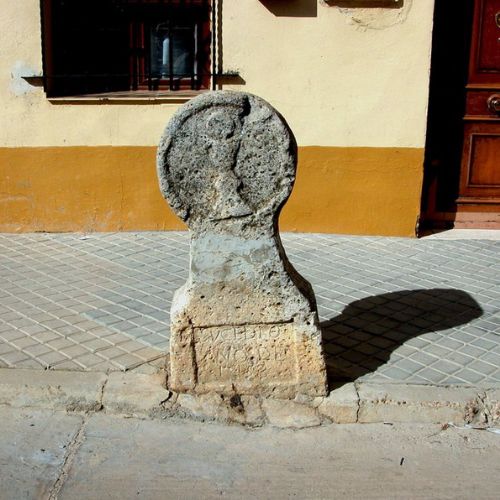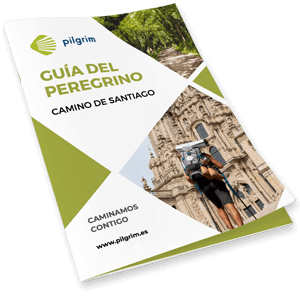Frómista
‹ Back to the stage
Frómista
- Residents: 822 aprox.
- Province: Burgos
Information
Get to know Frómista
Despite its small size, the town of Frómista is steeped in history, having been established in the Middle Ages.
At this point the Camino de Santiago shares a path with the Canal de Castilla, so it is usually a place that welcomes many pilgrims and walkers. Frómista presents the basic services that pilgrims may need.
Location
How to get there
The easiest way to get to Fromista is by the A-67 highway, which connects Santander with Palencia, having its own exit. This way, whether you are coming from Palencia, Torrelavega, Santander or any other point along the route of the highway, you just have to take this road. To get from Burgos take the A-231 to Osorno and then the A-67.
Another option is to reach the village by public transport, there are rail lines that connect the village with Palencia, Valladolid and Santander and there are also daily bus lines from Palencia, Burgos and Carrión de los Condes.
History / Culture
What to see
Museo Parroquial
The Parish Museum of Frómista is located inside the church of San Pedro and managed by the parish.
It offers the visitor to discover the magnificent 29 Flemish tables of the altarpiece of Ntra. Sª del Castillo and objects of the Parish of San Pedro, such as, for example, the paten protagonist of the miracle of the village of Frómista.

Museo Histórico Etnográfico
The Ethnographic Historical Museum is located next to the church of San Pedro and is a private initiative. This space shows what was Frómista and Castilla in another era and offers visitors a tour of the different professions and trades, showing the characteristic tools and implements. It is the ideal place to appreciate the importance of the work and effort invested in labor and crafts, which today are preserved as a precious memory.

La Piedra del Milagro
The Miracle Stone is located in front of Pedro Fernández de Teresa who, according to legend, had borrowed money from a Jew who lived in the village and could not pay it back later. It was then that the Jew denounced him to the ecclesiastical authorities and they decided to excommunicate Don Pedro. Upon being excommunicated, Pedro returned the money to the Jew, but forgot to tell the ecclesiastical authority that the payment had been made.

Iglesia de San Pedro
The Church of San Pedro was designed by Juan de Escalante with a Gothic style in general, with the exception of the door, which dates back to the Renaissance presenting a structure of the ancient Roman semicircular arches with a neoclassical portico.
The church was designed by Juan de Escalante with a Gothic style in general, with the exception of the door, which dates back to the Renaissance presenting a structure of the ancient Roman arches with a neoclassical portico.
The interior of the church is divided into three wide naves covered with ribbed vaulting. It can be seen at a glance that the central nave is twisted, due to the fact that next to the church there is a stream that has caused the deviation of the structure.
<pOf what is preserved today it is worth mentioning the 17th century main altarpiece designed by Francisco de Trejo and the paintings in the side aisles depicting St. Joseph with the Child and a Crucified Christ painted by Gregorio Ferro, a disciple of Mengs.

Iglesia de San Martín
The 11th century Romanesque style church of San Martín was built by order of Doña Mayor de Castilla in 1066. As the years went by, elements such as chapels, sacristies, the bell tower over the current dome, etc. were added. These extensions significantly damaged the main structure of the church, so between 1896 and 1904 it was restored and all additions were removed, returning the original structure to the temple.

Iglesia de Nuestra Señora del Castillo
The Church of Our Lady of the Castle is completely empty inside, so visitors to the temple will have to be content with contemplating the beauty of the exterior.
The Church of Our Lady of the Castle is completely empty inside, so visitors to the temple will have to be content with contemplating the beauty of the exterior.
According to legend, the church was built by order of one of the lords of the town to clear his conscience before he died, due to the bad treatment he had given to his vassals. The temple was built in the same place of the castle and with the same stone, resulting in a Gothic style church, consisting of three naves separated by pillars and closed with a ribbed vault and a tower.

Ermita del Otero
The Ermita del Otero was far from the urban center of the town, so it had a lesser importance with respect to the rest of the churches of the town, which is why it was deteriorating, to such an extent that in the eighteenth century, the bishop of Palencia, gave order to destroy the temple except the transept. Then the bishop ordered to build walls around the transept to safeguard it.
At present you can still see the stones of the foundations of the old chapel and the sculptural remains of the niches of the side walls. A 13th century image of Our Lady of the Otero with the Child sitting on her knees is also preserved.

Information of interest
Local police
112
Civil guard
919 810 003
Fire department
112
Civil protection
112
Town hall
979 810 001
Health center
979 810 065
Tourism office
672 146 994
Barrio del Canal, La Casa del Esclusero

We send you your itinerary
Enter your details and receive your travel itinerary by email
Recommended
Gastronomy
Recommended
Festivals and Pilgrimages
Local festivity
15 de Mayo: Fiesta de San Isidro
Local festivity
5 de Febrero: Fiesta de San Águeda
Local festivity
25 de Julio: Festividad de Santiago Apóstol
Local festivity
Primer domingo de Septiembre: Día del peregrino
Local festivity
Lunes siguiente a Pascua: San Telmo
French Way
On foot
33 stages



































